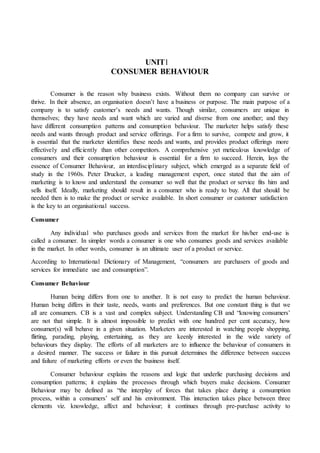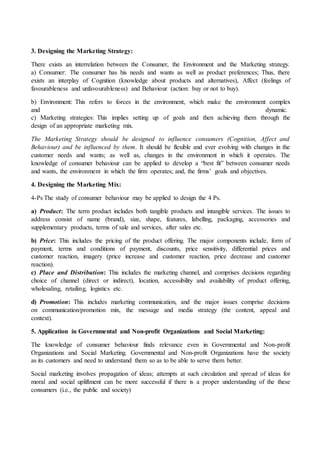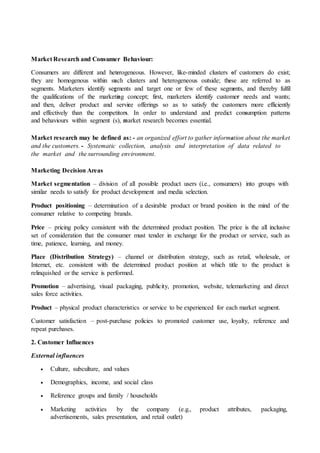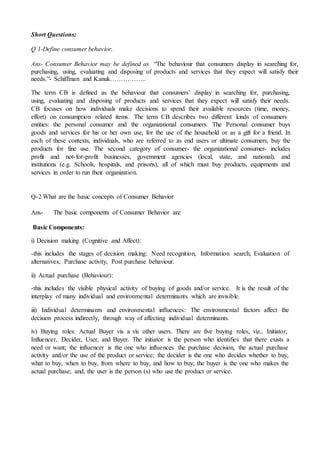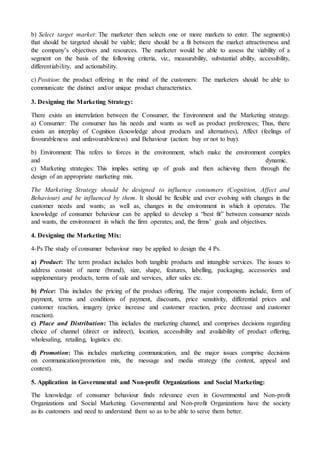The document discusses consumer behavior, defining it as the study of how individuals make decisions to spend resources on consumption. Consumer behavior is influenced by internal factors like cognition, affect, and behavior as well as external environmental factors. It is a complex process that marketers must understand in order to effectively segment, target, position, and design products for consumers. The key is providing value to satisfy consumer needs and wants better than competitors. Studying consumer behavior helps marketers analyze opportunities and threats, implement marketing strategies, and improve standards of living through consumption.
